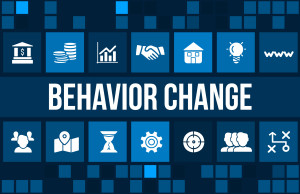 Often clients tell me that one of the major disappointments from their organizational initiatives is that behavior change doesn’t occur. As one client told me, “The employees just go back to the old way of working; even if the new way is so much better!”
Often clients tell me that one of the major disappointments from their organizational initiatives is that behavior change doesn’t occur. As one client told me, “The employees just go back to the old way of working; even if the new way is so much better!”
Every change requires a change in the behavior of people. We have to change any number of things – how we get work done, how we interact with clients, how we work together, how we process payments, etc. This requires a change in behavior. If we launch a change initiative without considering what behavior has to change, it cannot be successful. When launching a change initiative, early on, determine if changing behavior will require providing training, enabling for a transition period, or ensuring involvement in making decisions about a new process. Certainly changing behavior requires sharing a vision of the future and the value of the initiative to the organization and also to the individuals within the organization.
Let’s look at an example: Abigail is leading a change initiative that will require Accounts Payable to change how they process invoices. The individuals doing the job now have been working with the current process for the last five years. While the current process has worked well, due to increased invoices needing to be processed it is essential that the process be refined to improve workflow and speed up processing. Over time the amount of days to process invoices has gone from 30 days to 45 days. New agreements with vendors require that the processing time for invoices is at 30 days’ or less or interest will be due.
Abigail knows that simply changing the process to be more efficient is not enough to ensure success in reducing the amount of time to pay invoices. She also has to figure out how to change the behavior of the individuals using the process currently so that the new process will be accepted and utilized. Abigail took this approach:
She invited all individuals within the Accounts Payable department to a meeting to share with them the following information:
- The reasoning behind the change initiative
- The benefits to making the change for both the organization as well as each of the individuals within Accounts Payable
And she asked the following question: Will they help her to accomplish the project and share their ideas, thoughts, suggestions as well as concerns for changing the process?
She then followed up with individual meetings to answer questions, address concerns and ensure they were on board with the initiative.
She also shared that:
- Training would be provided on the new process.
- Testing of the new process would be done with those who would be using the process after they were trained in the new process.
- There would be time to actually learn and use the new process early on before the old process was removed. This would enable for making any adjustments or “tweaks” before full rollout and implementation.
This time spent by Abigail reaching out to connect with each individual within Accounts Payable enabled her to build relationships with them and to begin to build trust. By getting them involved early on – and asking for their help – Abigail makes them part-owners of the project. By telling them what will happen before the new process is implemented, they begin to feel more confident that they will gain the skills and knowledge they need to continue to be effective in their role.
In summary, in order to change behavior and ensure a successful initiative, it is essential to get stakeholders involved very early on and keep them involved throughout the project. Their feedback, input, thoughts, ideas, suggestions and concerns will enable for a better project end result.


